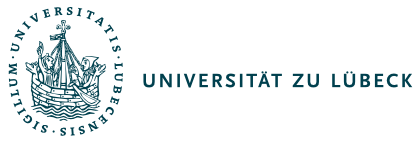Duration:
2 Semester | Turnus of offer:
each year, can be started in winter or summer semester | Credit points:
12 |
Course of studies, specific field and terms: - Master Robotics and Autonomous Systems 2019 (advanced module), advanced curriculum, 1st or 2nd semester
|
Classes and lectures: - Medical Robotics (exercise, 1 SWS)
- Seminar Robotics und Automation (seminar, 2 SWS)
- Medical Robotics (lecture, 2 SWS)
- Inverse Problems in Image Processing (exercise, 1 SWS)
- Inverse Problems in Image Processing (lecture, 2 SWS)
| Workload: - 190 Hours private studies
- 150 Hours in-classroom work
- 20 Hours exam preparation
| |
Contents of teaching: | - Introduction to inverse and ill-posed problems on the basis of selected examples (including seismology, impedance tomography, heat conduction, computed tomography, acoustics)
- Concept of ill-posedness of the inverse problem (Hadamard)
- Singular value decomposition and generalized inverse
- Regularization methods (eg Tikhonov, Phillips, Ivanov)
- Deconvolution
- Image restoration (deblurring, defocusing)
- Statistical methods (Bayes, maximum likelihood)
- Computed Tomography, Magnetic Particle Imaging
| |
Qualification-goals/Competencies: - Students are able to explain the concept of ill-posedness of the inverse problem and distinguish given inverse problems regarding good or bad posedness.
- They are able to formulate inverse problems of mathematical imaging and solve (approximate) with suitable numerical methods.
- They can assess the condition of a problem and the stability of a method.
- They master different regularization methods and are able to apply them to practical problems.
- They know methods to determine a suitable regularization.
- They can use methods of image reconstruction and restoration on real measurement data.
- Students are able to explain the concepts of forward and inverse kinematics for the examples of 3-joint and 6-joint robots.
- They are able to apply methods of medical robot systems and to simple practical applications.
- Students are able to transfer methods of motion learning to simple practical problems.
- Students are able to modify templates for dynamic calculations in order to create the calculations for their own constructions.
|
Grading through: - Written or oral exam as announced by the examiner
|
Responsible for this module: Teachers: |
Literature: - Kak and Slaney: Principles of Computerized Tomographic Imaging - SIAM Series 33, New York, 2001
- Natterer and Wübbeling: Mathematical Methods in Image Reconstruction - SIAM Monographs, New York 2001
- Bertero and Boccacci: Inverse Problems in Imaging - IoP Press, London, 2002
- Andreas Rieder: Keine Probleme mit inversen Problemen - Vieweg, Wiesbaden, 2003
- Buzug: Computed Tomography - Springer, Berlin, 2008
- J. -C. Latombe: Robot Motion Planning - Dordrecht: Kluwer 1990
- J.J. Craig: Introduction to Robotics - Pearson Prentice Hall 2002
- : Vorlesungsskript: Med. Robotics
|
Language: |
Notes:Admission requirements for taking the module:
- None
Admission requirements for participation in module examination(s):
- Successful completion of exercise assignments as specified at the beginning of the semester
Module Exam(s):
- RO5100-L1: Medical Robotics, one oral examination on the contents of both submodules, 100% of the module grade
- CS5280-S: Seminar Robotics and Automation, must be passed |
Letzte Änderung: 26.7.2023 |



















für die Ukraine